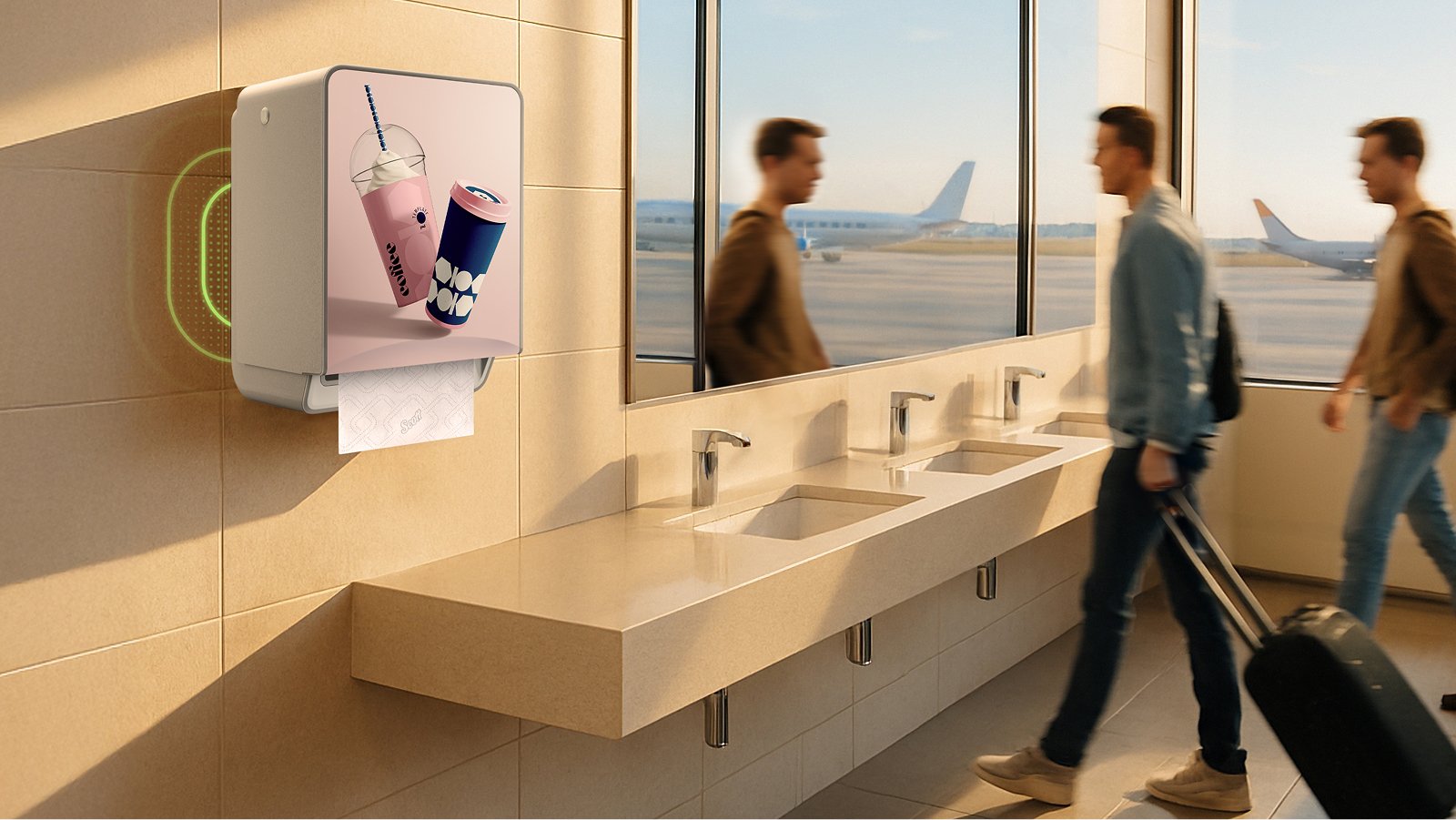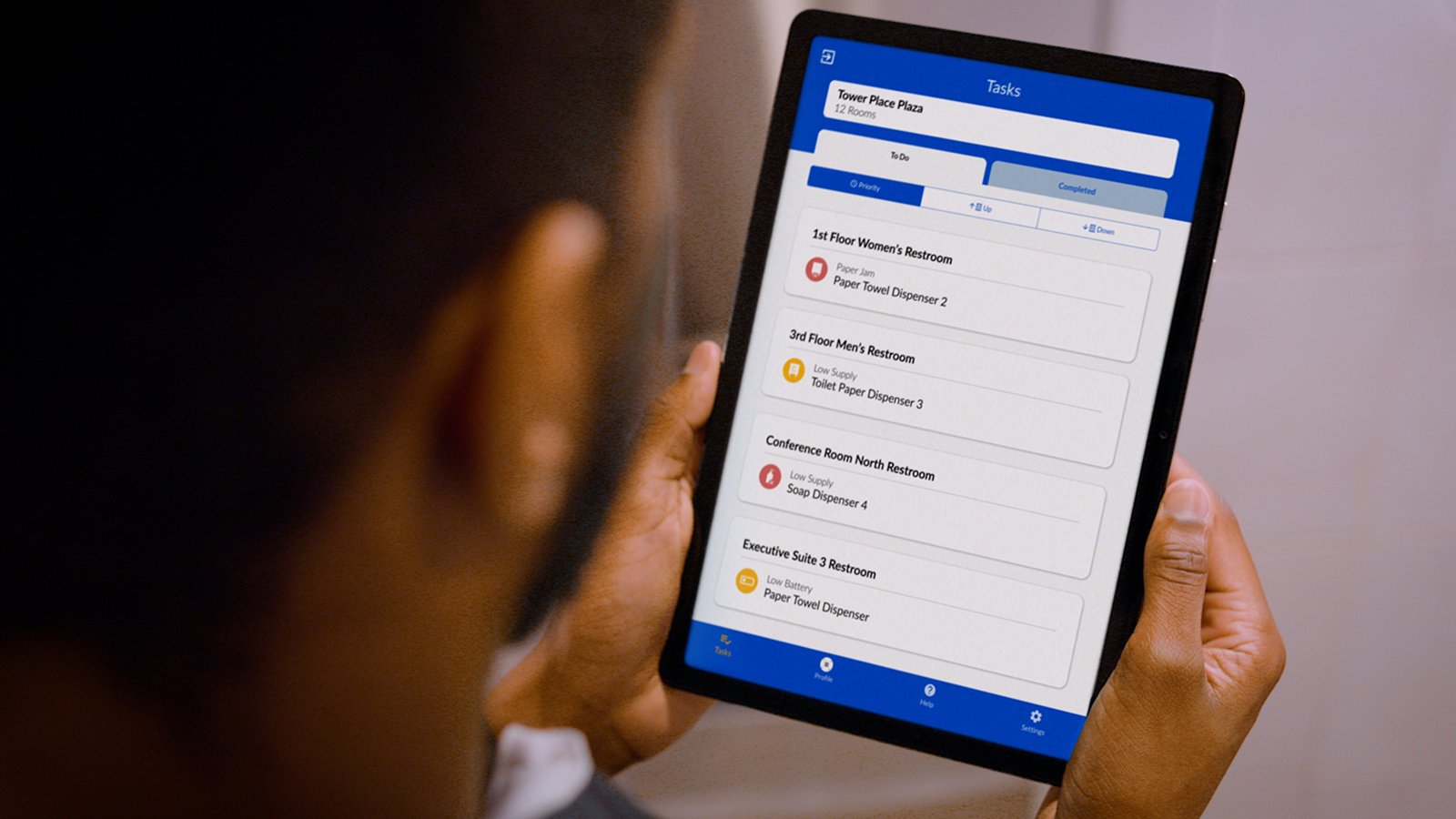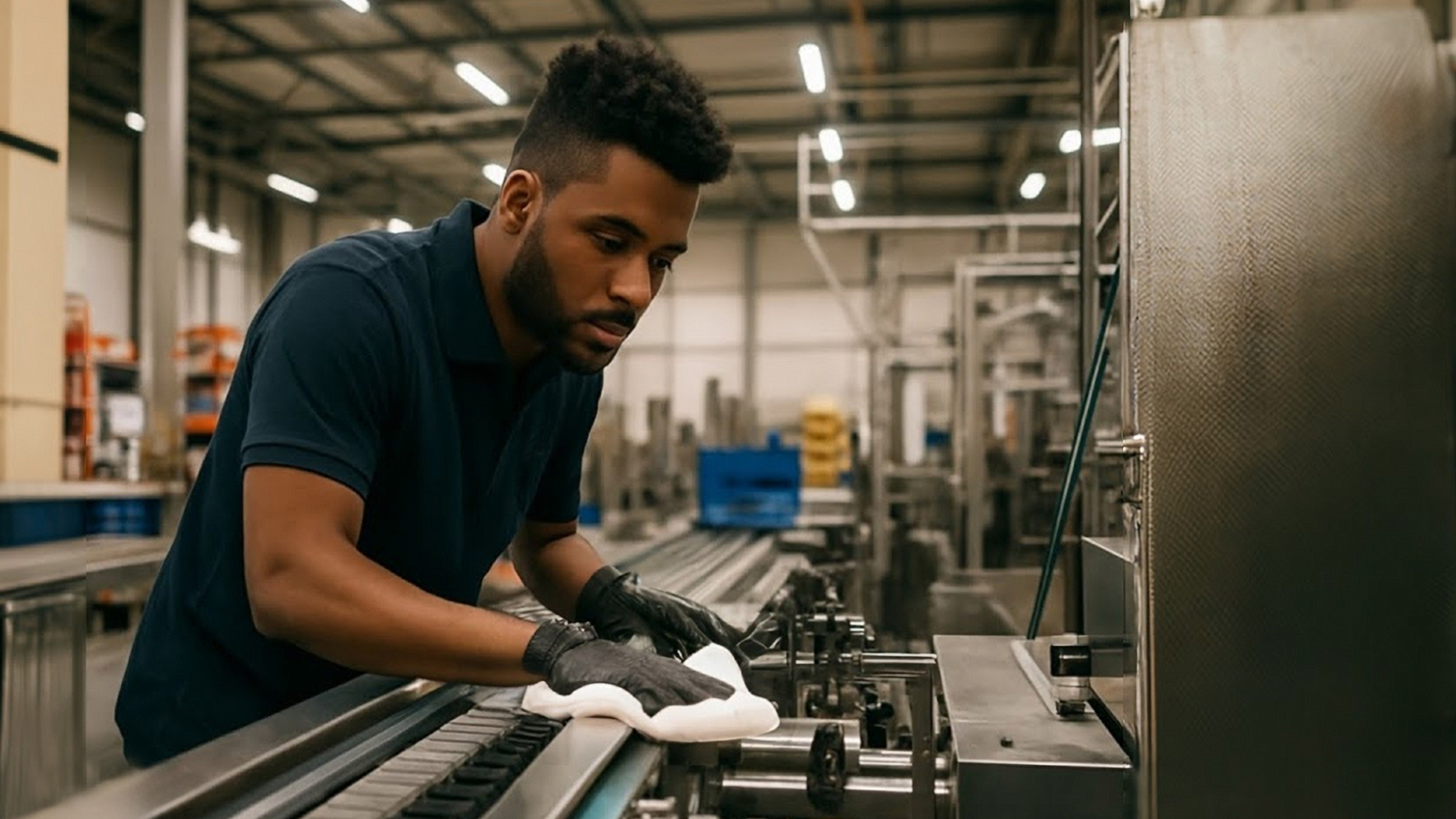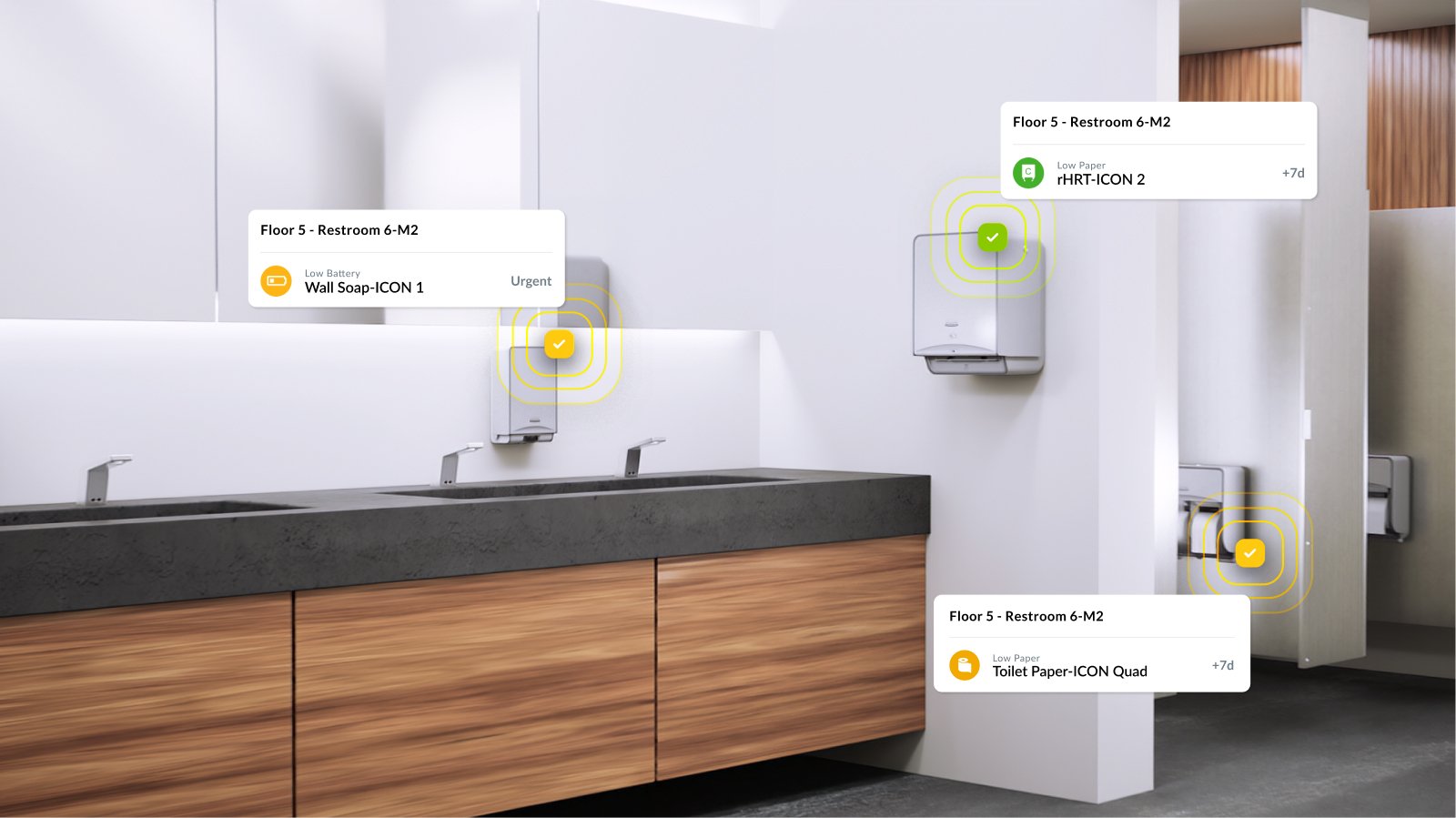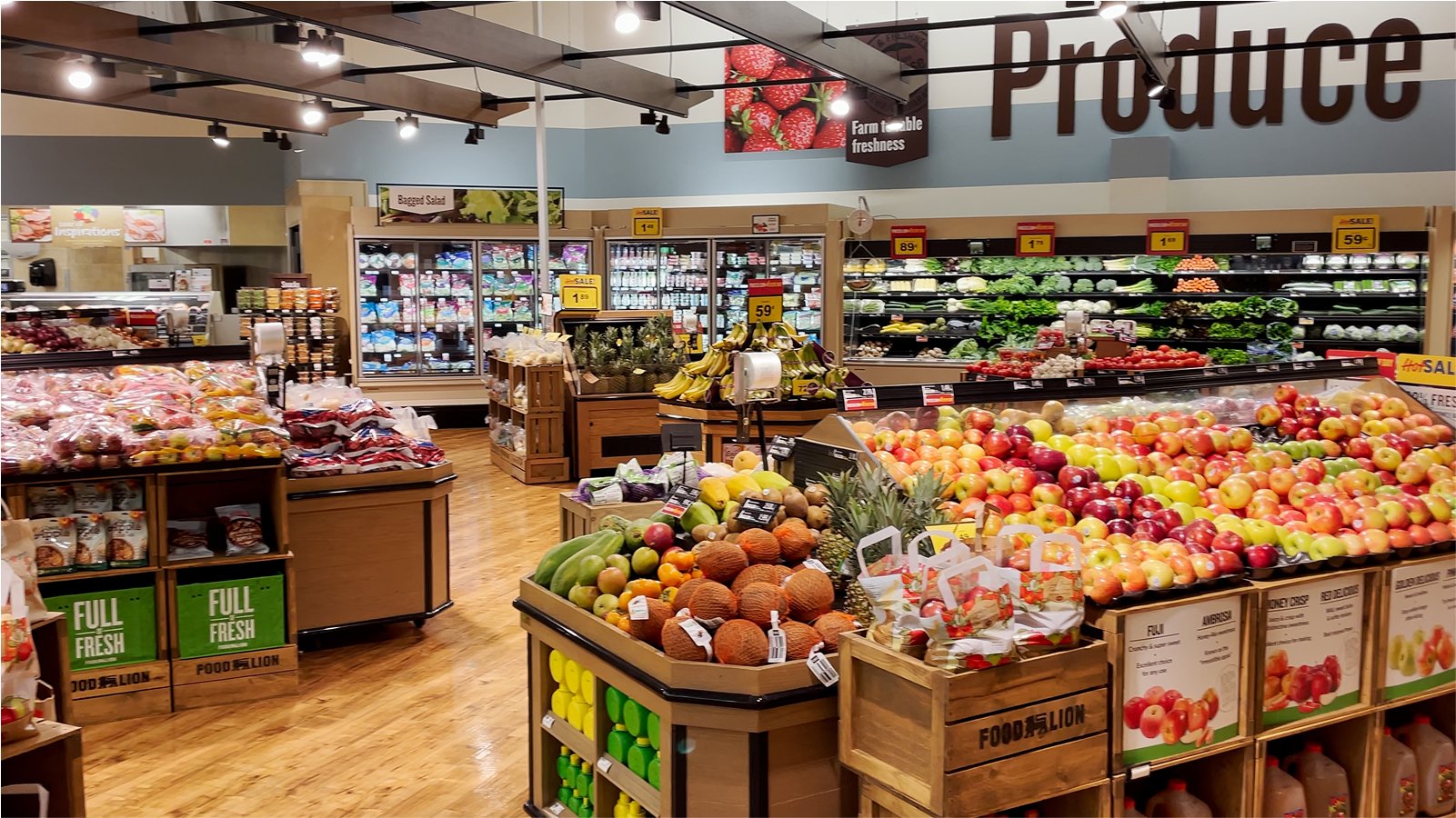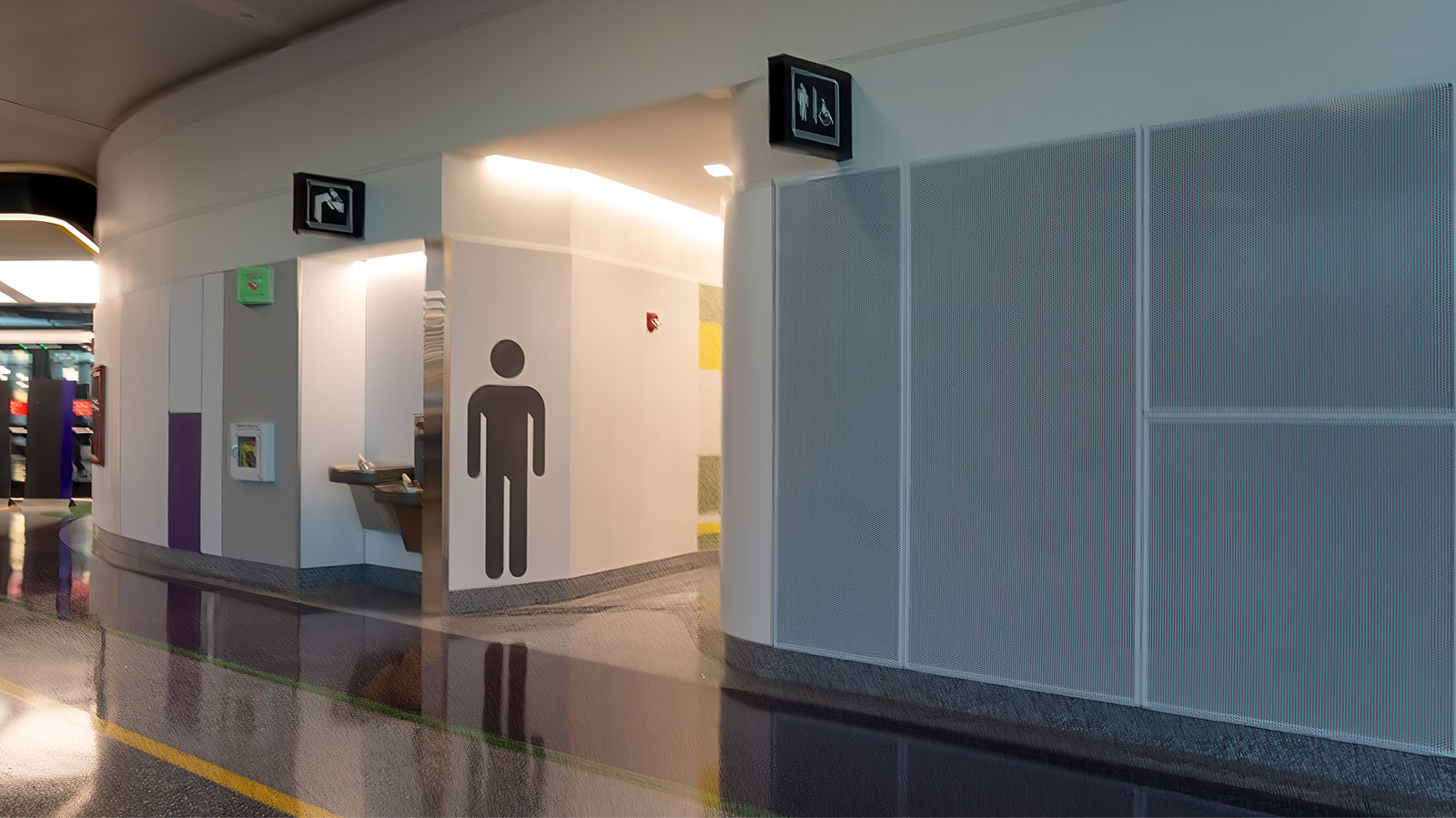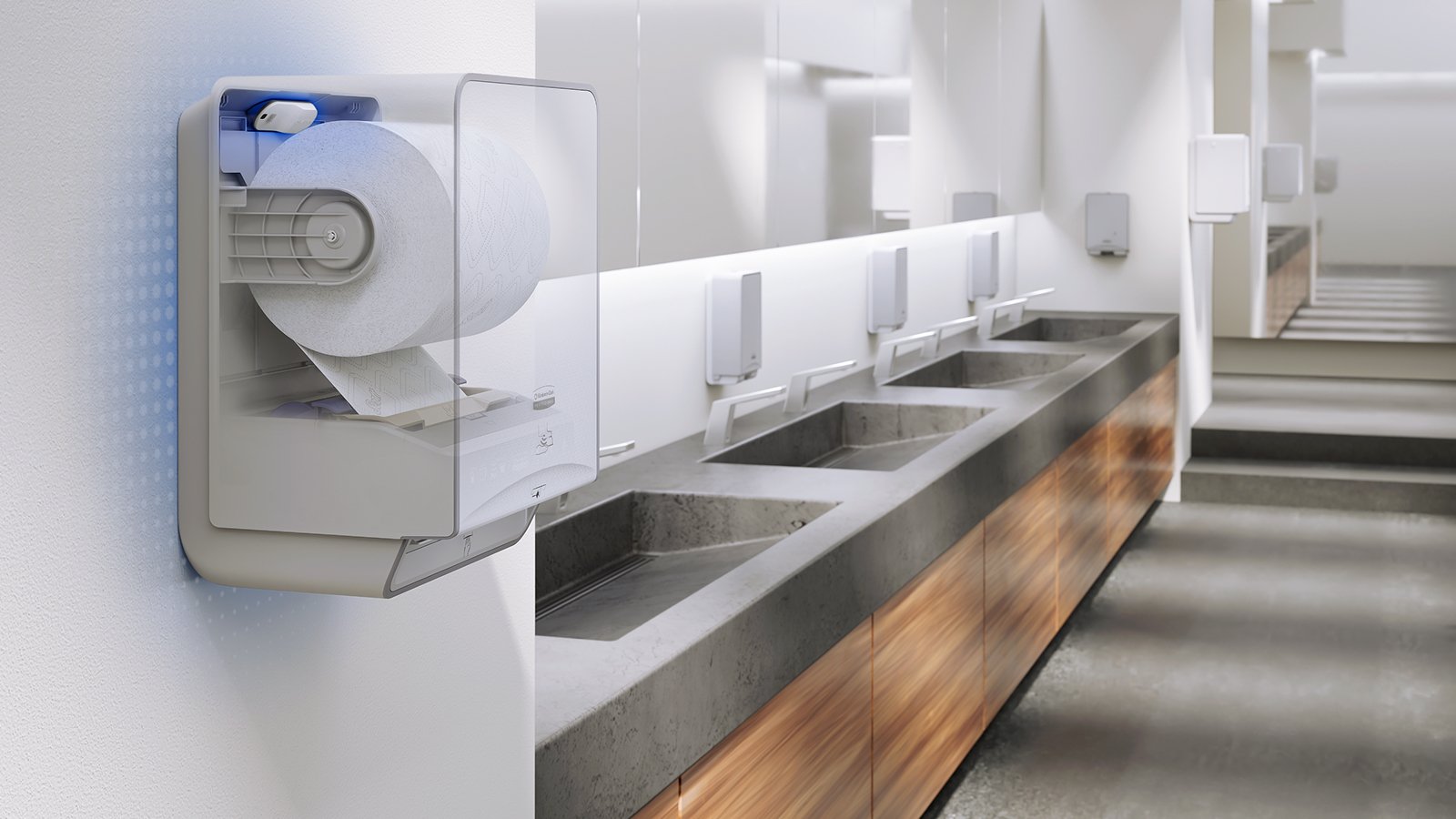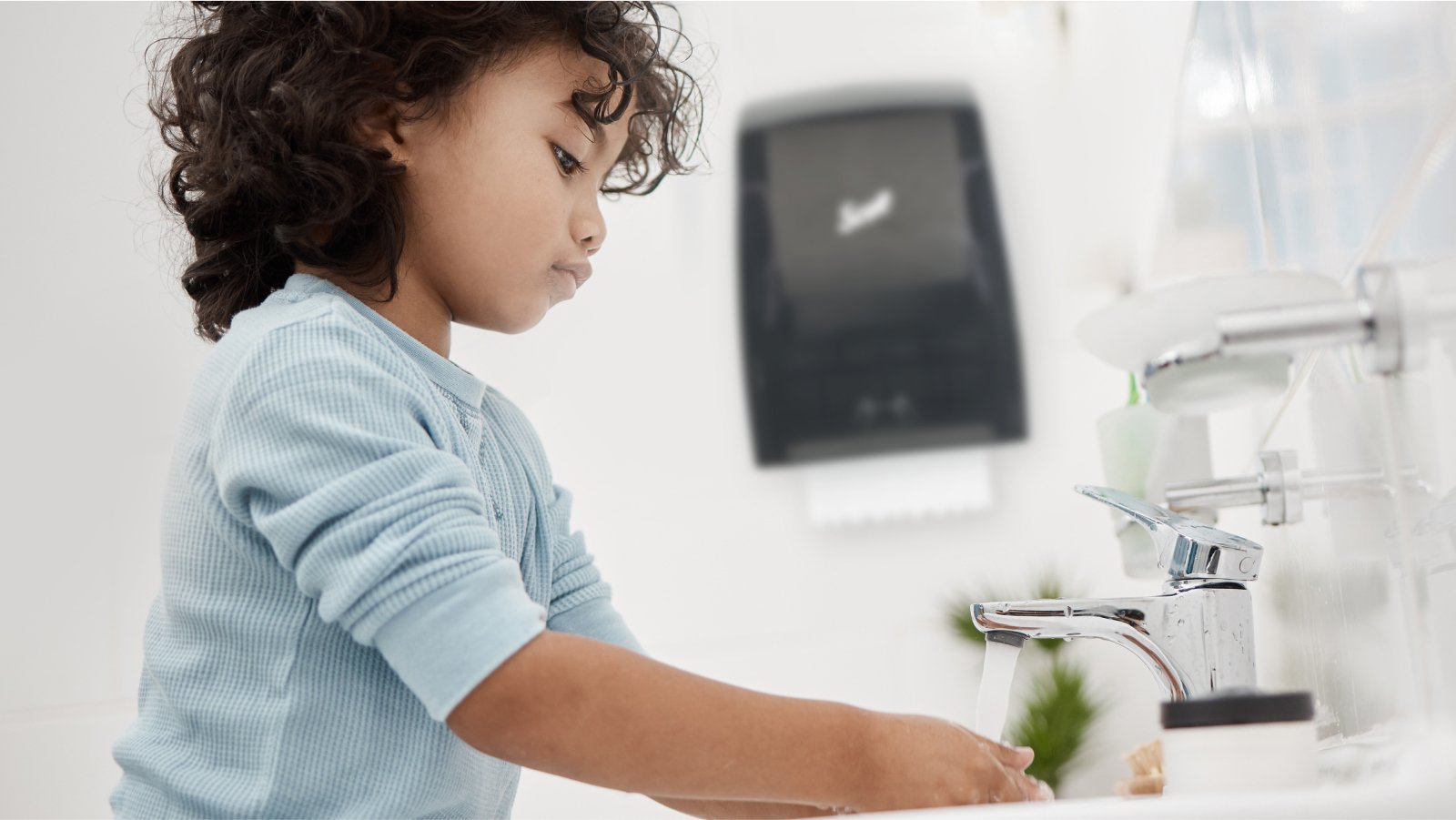Last Updated AUGUST 2024
The Future of Facility Management and Smart Restroom Technology
Unlock the power of smart restroom technology in facility management. Learn how it enhances hygiene, reduces waste and elevates tenant satisfaction. Explore why integrating it into your smart building strategy is crucial for modern facilities.
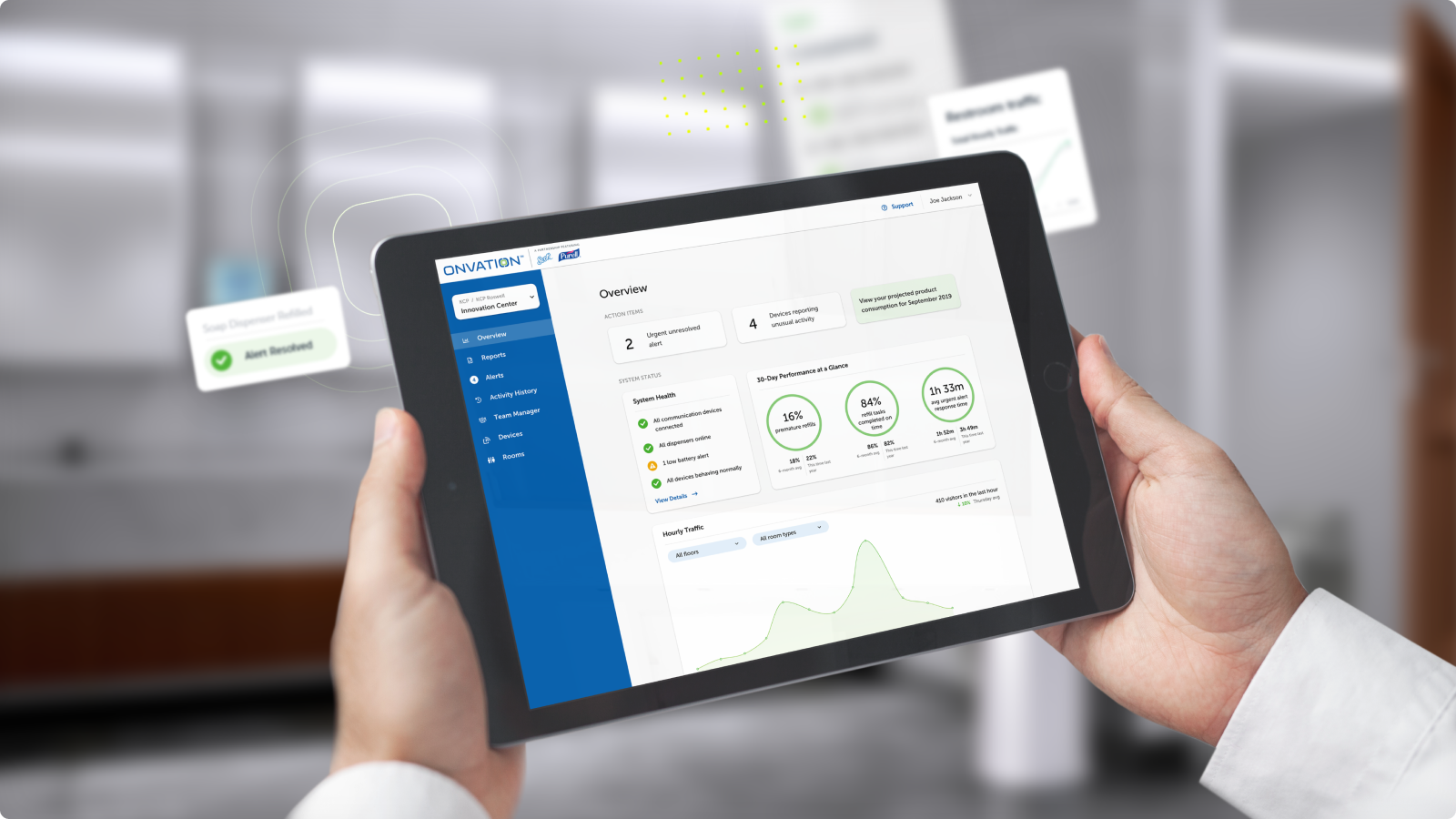
In today’s competitive landscape, the integration of smart technology is fundamentally transforming facility management. Among these advancements, smart restroom technology is making a significant impact by enabling facility managers to achieve exceptional levels of cleanliness and hygiene. These innovations not only enhance tenant satisfaction, but also promote sustainability, making them a crucial component of modern building management.
Across North America, the adoption of smart building technology is accelerating, with nearly 90% of commercial buildings utilizing some form of smart technology.1 Experts predict that by 2028, over 3.25 billion connected devices will be deployed in smart commercial buildings, revolutionizing facility management and enhancing efficiency.2
By integrating smart restroom technology, facility managers can drive substantial improvements in cleanliness, cost-effectiveness and overall building performance. Read on to explore the untapped potential of restrooms and understand why this area should be a strategic priority in your smart building strategy.
The Untapped Potential of Restrooms
Historically, restrooms haven't been a top priority in smart building management strategies. However, forward-thinking facility managers are now recognizing their potential to highlight attention to hygiene, cleanliness and brand reputation. Implementing smart restroom technology helps enable facility managers to achieve measurable enhancements that positively impact tenant satisfaction and sustainability.
This change in perspective has led to a strategic prioritization of restroom management. By embracing smart restroom technology, you can not only improve cleanliness and hygiene, but also drive performance improvements across the entire building management ecosystem.
Five Reasons to Embrace Smart Restroom Technology
Restrooms are one of the most highly trafficked, but least understood areas of any building
On average, people visit the restroom four to ten times a day, touching many commonly used surfaces in the process.3 This can make restrooms a hotbed for virus transmission. Unlike other high-traffic areas, such as lobbies and cafeterias, restrooms lack continuous monitoring to promptly address emerging issues.
This lack of visibility can quickly lead to poor user experiences, heightened tenant complaints and unhygienic environments — leading to further challenges for facility managers.
Smart restroom technology addresses these issues with real-time monitoring capabilities, offering insights into occupancy levels, cleanliness status and maintenance requirements. Facility managers can optimize strategies using data from smart devices, while features like touchless fixtures and automated cleaning systems help to uphold hygiene standards.
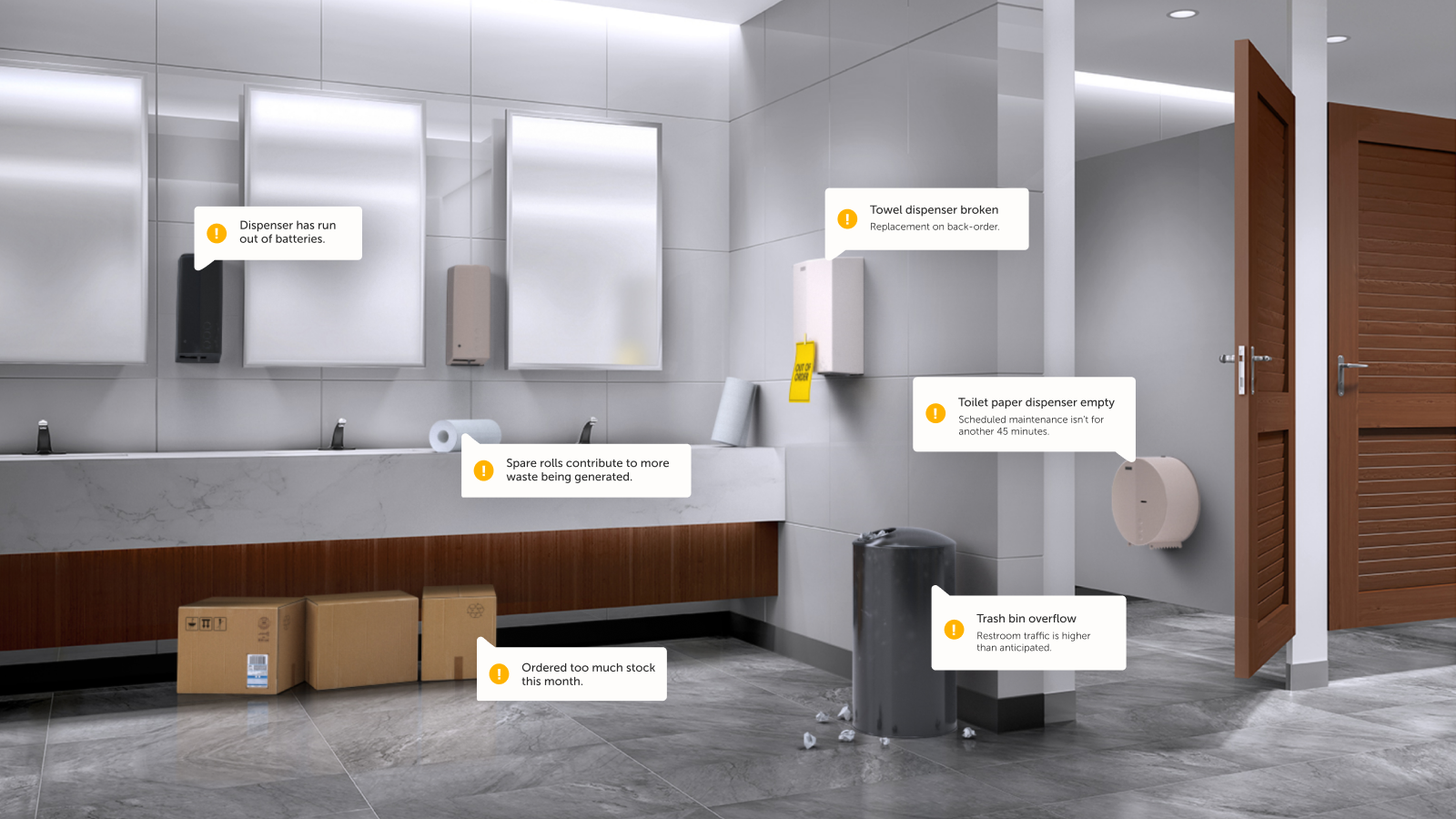
Restrooms are a source of wasteful spending
Standard restroom servicing protocols often lead to wasteful practices, with janitorial teams frequently refilling soap and paper dispensers prematurely. Concerns about potential runouts between servicing visits prompt custodians to discard unused consumables, resulting in significant waste and financial loss. This practice also raises sustainability concerns, as it contributes to unnecessary resource consumption and environmental impact.
Concerns about potential runouts between servicing visits prompt custodians to discard unused consumables, resulting in significant waste and financial loss.
By incorporating real-time monitoring capabilities, facility managers can accurately track consumable levels and usage patterns, ensuring timely refills without unnecessary waste. This proactive approach not only reduces costs, but also promotes sustainability by minimizing resource consumption and waste generation.
With smart restroom technology, facility managers can maximize efficiency, minimize waste and optimize ROI, making it an indispensable asset in modern facility management.
Commercial building cleaning procedures are typically static and outdated
Inside public restrooms, traditional schedule-based cleaning routines are often tracked with a clipboard behind the door. While conventional, these time-based cleaning routines don't address unexpected servicing needs between visits. With hygiene in high-traffic areas becoming a priority, facility managers are rethinking cleaning procedures, shifting from rigid schedules to activity and need-based execution.
Using real-time data on restroom usage and conditions, facility managers can implement flexible cleaning schedules that respond to actual patron needs. This proactive approach keeps restrooms clean and hygienic, reducing tenant complaints and enhancing overall satisfaction. Embracing smart technology allows managers to optimize cleaning efficiency and improve the performance of their building management systems.
Clean, hygienic restrooms are essential for facility health
A recent survey found that 74% of consumers agree that if the restroom is not clean, they don’t believe the rest of thefacility is being cleaned properly.4 Janitorial teams face numerous challenges in maintaining clean restrooms and hygienic buildings.
of consumers agree that if the restroom is not clean, they don’t believe the rest of the facility is being cleaned properly.4
Fixed cleaning schedules, rather than usage-based cleaning, can lead to the buildup of germs and bacteria between scheduled visits. Restroom conditions can also change rapidly after sudden increases in traffic, such as after meetings or lunch breaks, requiring immediate attention to maintain hygiene standards.
Smart restroom technology enables dynamic cleaning schedules that respond to actual usage and needs, ensuring restrooms remain clean and hygienic. By using data-driven insights, facility managers can better manage unplanned servicing needs, ultimately maintaining a higher standard of cleanliness and enhancing the overall health of the building.
Smart restroom technology is readily available
Transforming traditional restrooms into smart restrooms is no longer a mysterious undertaking. Smart, connected software like Onvation® has been tested and successfully implemented in numerous commercial environments. With smart sensors and mobile device integration, adopting smart restroom technology is seamless and straightforward.
In today’s focus on overall commercial building hygiene, leaders must strategically deploy their cleaning resources. Ensuring these efforts are visible reassures occupants that cleanliness and well-being are priorities. Integrating smart restroom technology helps building managers meet the public’s expectations, enhancing occupant satisfaction and benefiting the overall business.
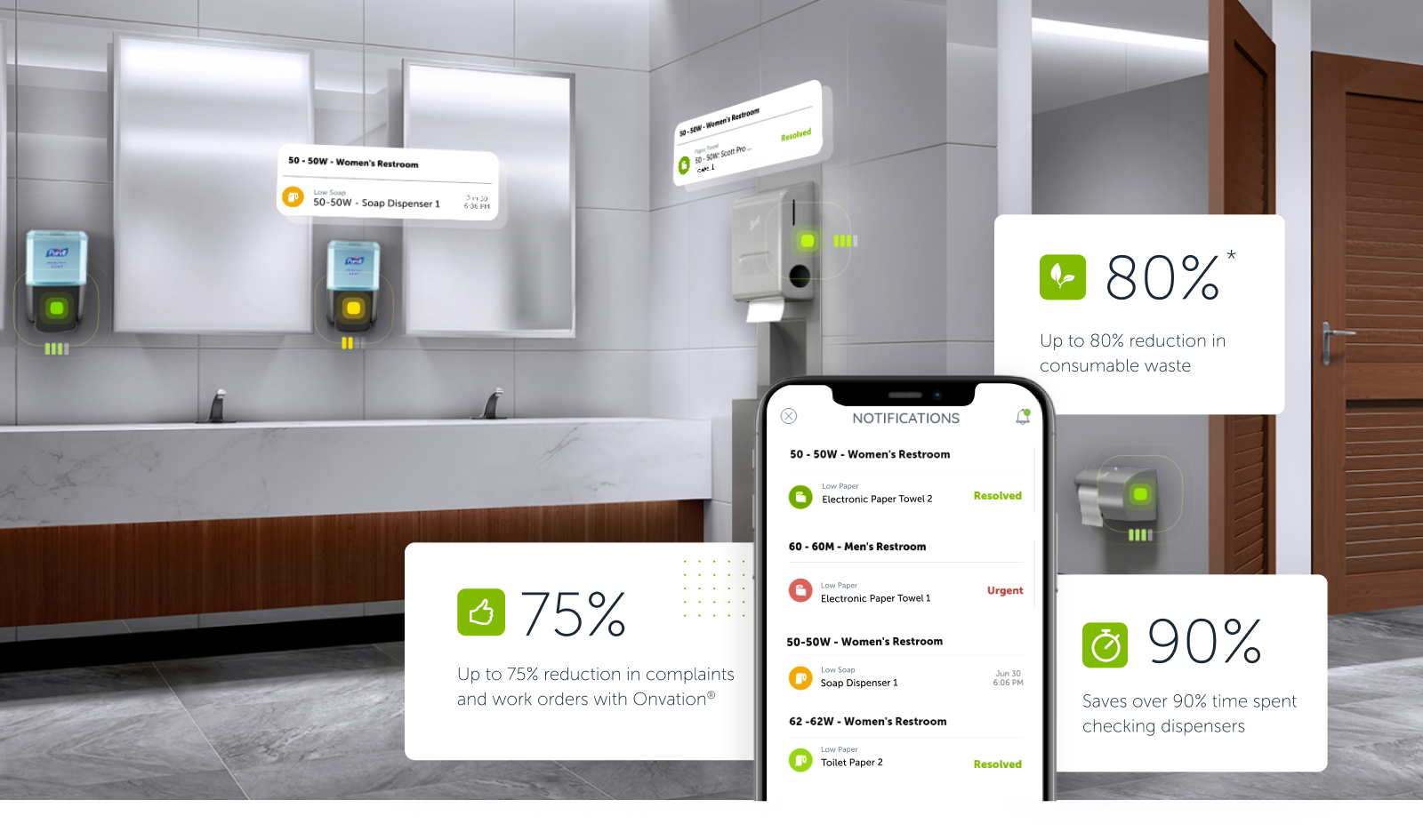
Smart Restroom Technology Is Revolutionizing Facility Management
Smart restroom technology is transforming facility management with its innovative solutions to longstanding challenges. These systems enhance cleanliness, optimize resource utilization and provide real-time data, elevating restroom maintenance to unprecedented levels of efficiency and effectiveness. This results in reduced wasteful spending, streamlined cleaning procedures, heightened tenant satisfaction and improved building hygiene, all while contributing to sustainability objectives.
By prioritizing restroom management, building leaders demonstrate their commitment to cleanliness and patron well-being. Embracing smart restroom technology enables them to unlock the full potential of building performance and enhance overall occupant satisfaction, without compromising on quality or efficiency.
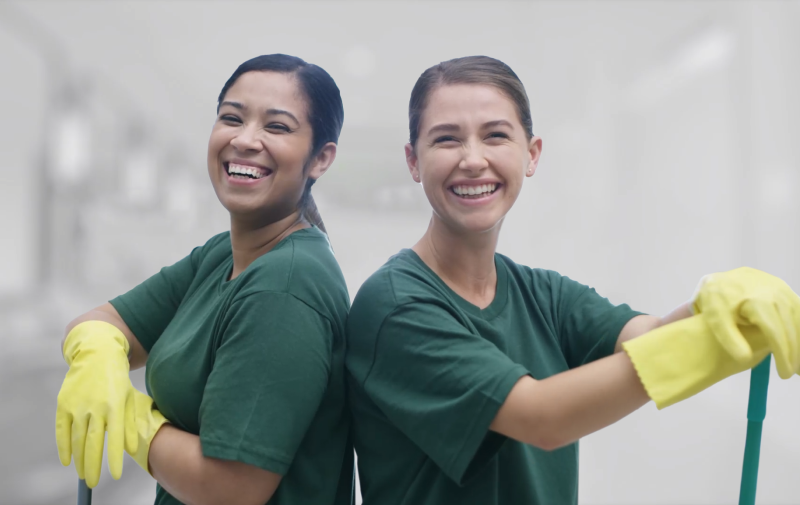
Smart Restrooms Make Buildings More Hygienic
Learn how IoT technology is transforming how facilities are managed to provide you with more control over hygiene conditions, reduce waste and boost team productivity.
1 Internet of Things in Smart Commercial Buildings 2023 (2024, April 13). Memoori. https://memoori.com/portfolio/internet-things-smart-commercial-buildings-2018-2022/
2 Asteingruber (2023, December 8). Developing future-ready commercial buildings to be sustainable and efficient. Consulting - Specifying Engineer. https://www.csemag.com/articles/developing-future-ready-commercial-buildings-to-be-sustainable-and-efficient/#:~:text=Scalable%20infrastructure%20and%20integrated%20technology,to%203.25%20billion%20connected%20devices.
3 Savory, G., & Savory, G. (2021, August 16). Urinary frequency - How often should you pee? Bladder & Bowel Community. https://www.bladderandbowel.org/bladder/bladder-conditions-and-symptoms/frequency/ #:~:text=For%20most%20people%2C%20the%20normal,times%20they%20visit%20the%20toilet.
4 KCP Hygiene Consumer Behavior Study, May 2020










